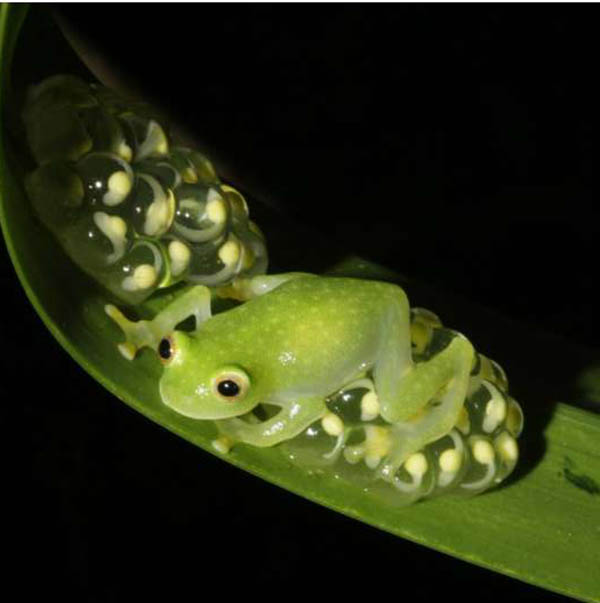

The frog is an amphibian in the order Anura (meaning "tail-less" from Greek an-, without + oura, tail), formerly referred to as Salientia (Latin saltare, to jump). Adult frogs are characterized by long hind legs, a short body, webbed digits, protruding eyes and the absence of a tail. Most frogs have a semi-aquatic lifestyle, but move easily on land by jumping or climbing. They typically lay their eggs in puddles, ponds or lakes; and their larvae, called tadpoles, have gills and develop in water. Adult frogs follow a carnivorous diet, mostly of arthropods, annelids and gastropods. Frogs are most noticeable by their call, which can be widely heard during the night or day, mainly in their mating season.
The distribution of frogs ranges from tropic to subarctic regions, but most species are found in tropical rainforests. Consisting of more than 5,000 species described, they are among the most diverse groups of vertebrates. However, populations of certain frog species are significantly declining.
A distinction is often made between frogs and toads on the basis of their appearance, caused by the convergent adaptation among so-called toads to dry environments; however, this distinction has no taxonomic basis. The only family exclusively given the common name "toad" is Bufonidae, but many species from other families are also called "toads," and the species within the toad genus Atelopus are referred to as "harlequin frogs." Continue reading
Scientists in Australia have discovered a tree frog with bright blue skin a pigmentation is due to a rare genetic mutation Live Science - July 15, 2024
Glass act: Scientists reveal secrets of frog transparency PhysOrg - December 25, 2022

Some frogs found in South and Central America have the rare ability to turn on and off their nearly transparent appearance. During the day, these nocturnal frogs sleep by hanging underneath tree leaves. Their delicate, greenish transparent forms don't cast shadows, rendering them almost invisible to birds and other predators passing overhead or underneath. But when northern glass frogs wake up and hop around in search of insects and mates, they take on an opaque reddish-brown color.